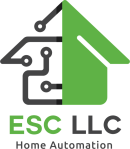For Architects Only
Architects have a programming phase where you reconcile the requirements of plumbers, electricians, and HVAC guys. Where is the low voltage contractor? We have racks of equipment with space and ventilation requirements, speakers that mount flush into ceilings and soffits, and motorized shades that may require a pocket framed into the ceiling. We also need to provide recess dimensions if the client wants to have the TV mounted flush into a wall. If the client wants lighting control; like a Lutron, Crestron, or Control4 system, we are the ones who provide the load schedule to the electrician. Does the electrician know that? The wiring topology changes significantly when you use panelized lighting control. Will the electrician have to rebid the project later because of that?
Low Voltage is a relatively new trade, which has traditionally been associated with the builder's phase of the project. This makes some sense since the low voltage contractor often contracts with the builder, but too many important decisions should have been made earlier when the space, ventilation, and electrical design was still on paper. An early consultation with the architect and client saves the builder from having to send plans back for changes, or moving ahead with construction that doesn't match the architectural plans. In some cases, a client just foregoes an amenity they want because it requires too much time and money to go back and change things. This could be avoided if the low voltage contractor was allowed a technology meeting before the programming phase.
Low voltage contractors call themselves systems integrators for a very good reason; our work involves nearly every other trade on the project. This incudes landscapers, electricians, plumbers, framers, HVAC, interior designers, and painters. We are integrating the control of various electronic systems and collaborating with others to provide an aesthetically pleasing result. We should be part of the team from an early stage. Even if the client is not ready to contract the low voltage system, an early meeting can provide helpful information to the client, which can better define the scope of work, the budget, and mechanical considerations.
ESC is available for a technology meeting with you and your clients long before we have boots on the ground. It just makes sense. ESC also offers lunch & learn courses that qualify for AIA continuing education credits. Some of them qualify for HSW credit as well.
When you subscribe to the blog, we will send you an e-mail when there are new updates on the site so you wouldn't miss them.



